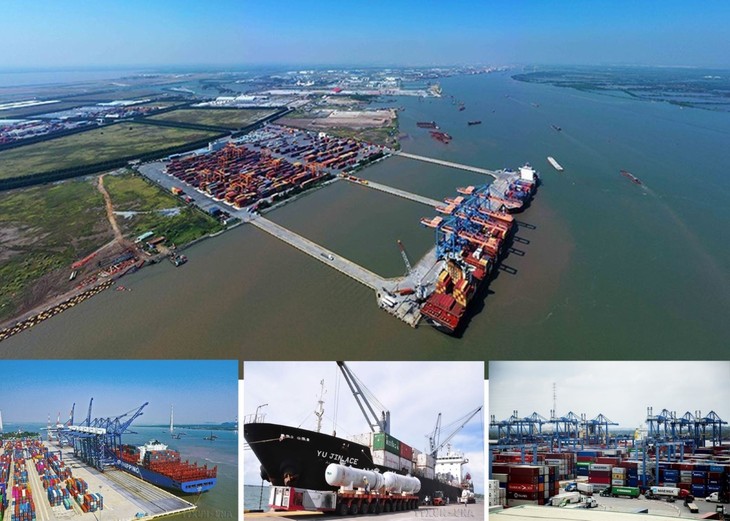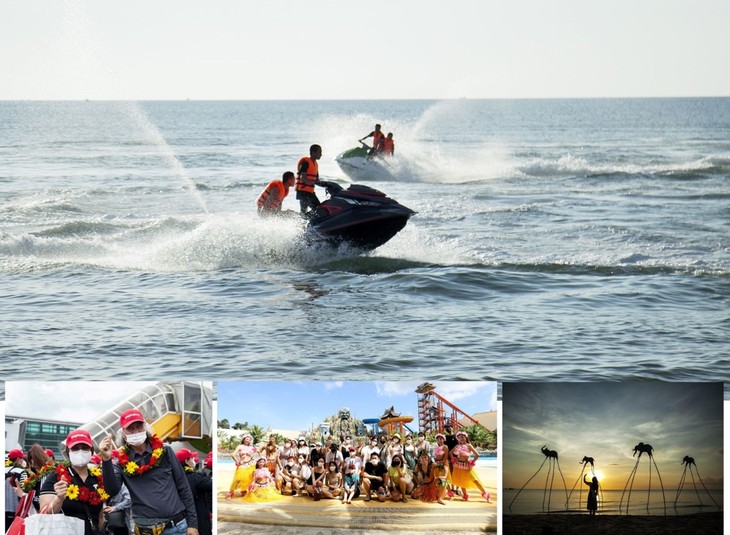(VOVWORLD) - Vietnam is celebrating Sea and Island Week from June 1 to June 8, an occasion to reaffirm its marine economic potential and reiterate its determination to develop the marine economy and protect coastal environmental resources.
 Vietnam has great potential in maritime freight transport. (Photo: VNA) Vietnam has great potential in maritime freight transport. (Photo: VNA) |
This year’s event comes with Vietnam accelerating the administrative merger of several provinces before August 15. More than a mere redrawing of boundaries, the merger is set to create new development zones oriented toward the sea.
The mergers will foster national connectivity and integration, with a strategic tilt toward maritime development.
62% of Vietnam’s cities and provinces will be coastal
Vietnam currently has 63 provinces and cities, 28 of which are coastal, and a coastline approximately 3,260 kilometers long. Following the proposed administrative restructuring, the number of provinces and cities will be 34, with 21 of them bordering the sea. This raises the percentage of coastal localities from 44% (28/63) to 62% (21/34).
Although Vietnam has prioritized marine economic development for years, much of the potential remains untapped. The reorganization of provinces will create larger development frameworks.
At a meeting with veteran revolutionary officials in southern Vietnam on April 21, Party General Secretary To Lam said the merger aims to enhance connectivity between mountain, delta, and island regions. He said the restructuring will allow localities to develop collaboratively, creating momentum for some provinces to become centrally-administered cities and major economic hubs.
Experts say linking inland provinces, particularly in the Central Highlands, with coastal provinces is essential in the current era of integrated development. It will help establish an East–West development axis that connects mountains to the sea and highlands to lowlands.
In the eastern part of the Mekong Delta, the merger of Trà Vinh, Vĩnh Long, and Bến Tre will create a province with a vast natural resource area, a sizable population, and greater maritime access.
Nguyen Quynh Thien, Vice Chairman of the Trà Vinh People’s Committee, said: “The merger of three provinces will expand the development capacity of the new Vinh Long province, with Trà Vinh playing a critical role in the marine economy. According to the Institute of Energy, the province’s wind power capacity is more than 24,000 MW, enough to support future circular economy models and green economy transformation.”
 Many beaches in Vietnam attract domestic and international tourists. (Photo: VNA) Many beaches in Vietnam attract domestic and international tourists. (Photo: VNA) |
Intersectoral coordination for sustainable marine development
The Vietnamese government is pressing ahead with its Strategy for the Sustainable Development of the Marine Economy to 2030, with a Vision to 2045. Now in its seventh year, the strategy targets marine tourism, maritime logistics, oil and gas, fisheries, and renewable energy. But only 35 of the total 169 projects and initiatives assigned to ministries and 28 coastal provinces and cities are currently underway.
To address this problem, Vietnam plans to establish a robust intersectoral and interregional coordination mechanism. Deputy Prime Minister Tran Hong Ha said this system would lay the foundation for integrated marine resource management.
Under this mechanism, the Ministry of Agriculture and Environment will lead efforts, working with relevant ministries and agencies to resolve conflicts between development priorities, evaluating options based on environmental sustainability, economic impact, and job creation.
The National Steering Committee for the Strategy on Sustainable Development of the Marine Economy is tasked with resolving disputes spanning provinces and regions, particularly for national- or international-level projects.
With a favorable geographic position near international maritime routes and the natural advantages of the East Sea, Vietnam is well-positioned to capitalize on marine trade, reinforce sovereignty, and elevate its global standing. The combination of strategic provincial mergers and implementation of the marine economic strategy promises to unleash powerful new momentum for Vietnam to become a nation that is strong and prosperous from the sea.